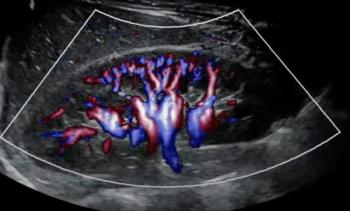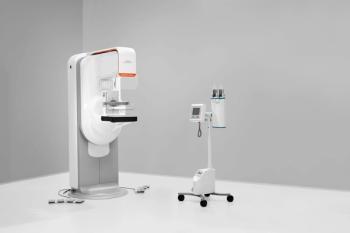
Ultra Low-Dose CT Might Not Mean an Equipment Upgrade
Bringing your low-dose CT protocols down even further doesn’t have to mean tossing out your old scanners and buying pricey new ones. According to one San Diego-based imaging center, you can trim radiation doses to almost nothing and still get high-quality scans appropriate for diagnosis.
Bringing your
The key is pairing iterative reconstruction (IR) with other methods that tailor low-dose protocols based on patient weight, said Jon M. Robins, MD, co-chief executive officer for Imaging Healthcare Specialists (IHS). IR technology wipes noise from CT scans, leaving behind an image with clear resolution. Using both strategies together means Robins wasn’t forced to purchase new scanning equipment.
“Our center made a commitment a few years back to offer the lowest dose CT scans we could. We have older scanners in my office – 4-slice, 8-slice, and so on – and I didn’t want to spend the $90,000 to $100,000 on technology with low-dose characteristics built in,” said Robins, who is also IHS’s heart imaging medical director. “IR has allowed us to extend our low-dose efforts to head and neck scans, pelvis, colonoscopy, sinus, and others.”
IHS purchased its IR technology – generic iterative retrospective reconstruction (GIRR) – from a third-party vendor in Israel. According to Robins, it interfaces with older scanners, enabling the machines to produce ultra low-dose images with clarity equal to scans from more modern technologies.
Since implementing IR in August, he said, IHS has achieved a 90 percent dose reduction in nearly 1,500 scans. This drop includes the initial 40 percent reduction IHS produced several years ago by using a patient’s body mass index to tailor each protocol. In addition, Robins said, the practice uses breast shields, includes contrast only when absolutely necessary, and doesn’t delay studies as ways to shave off radiation exposure.
However, Paul Kinahan, PhD, a University of Washington-Seattle radiology professor, said he was skeptical that such a significant dose reduction is possible with older scanners. It’s a claim that requires much clinical testing and evidence-based data, he said.
“This is certainly an area of a lot of interest, and it’s one that many in radiology feel is worth pursuing,” Kinahan said. “But demonstrating a reduction in radiation dose and getting an image of equal diagnosis quality on vintage equipment armed with a third-party product gives me pause.”
In many cases, he said, radiologists dislike the images IR produces, citing the amount of noise that remains. To overcome this issue, many technologists blend IR images with established analytical methods to reach some dose reduction while maintaining image clarity.
Robins agreed the ultimate quality of IR-generated images depends on quality of the image it’s asked to clean. So, before you make any changes to workflow, he recommended you examine every protocol for all your scans to determine what dose will give you both a low-dose, high-quality study.
“I’ve been extraordinarily excited by this technology, and I’ve even given the scans to colleagues to read. They didn’t know it was an ultra low-dose image produced through IR until I told them,” Robins said. “Using this technology has greatly impacted our promise to pursue the lowest-dose CT scans possible. I haven’t been disappointed.”
Newsletter
Stay at the forefront of radiology with the Diagnostic Imaging newsletter, delivering the latest news, clinical insights, and imaging advancements for today’s radiologists.




























